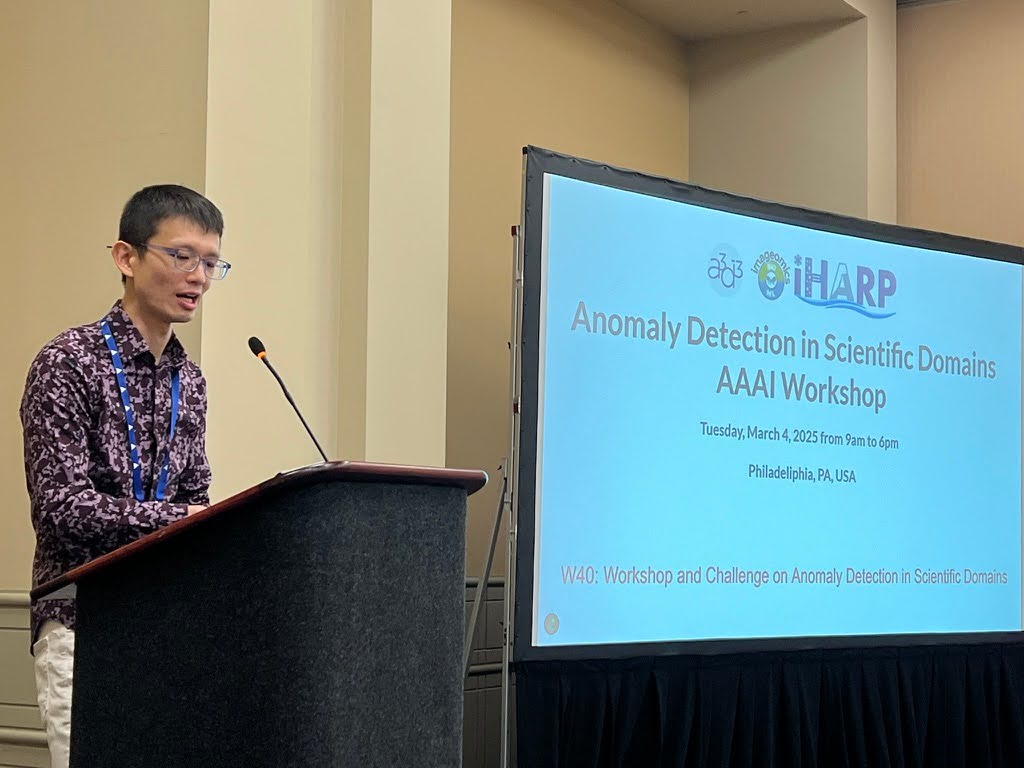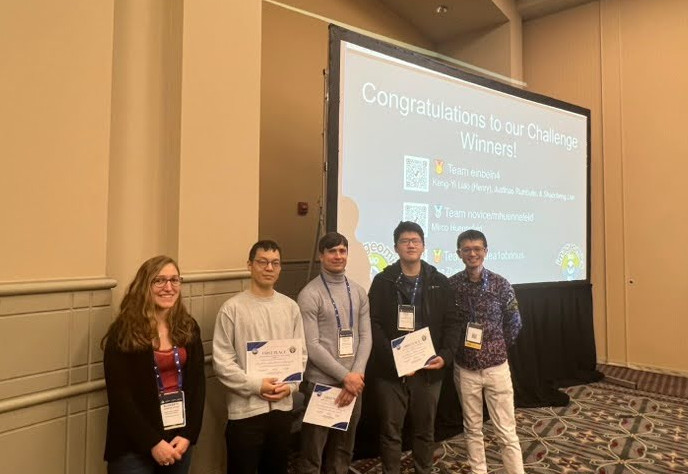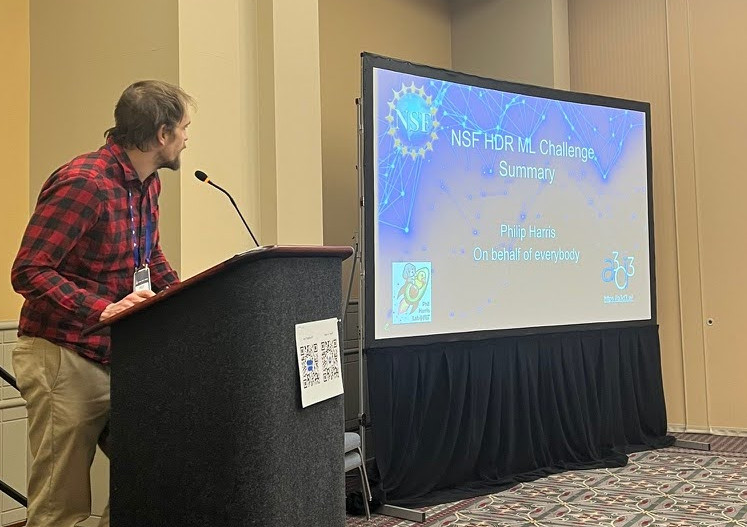Highlights from the First HDR Interdisciplinary Machine Learning Challenge
By: Yuan-Tang Chou
March 20, 2025
Scientific discovery often hinges on spotting the unexpected—those peculiar inconsistencies that stand out against the known pattern in our data. This process is known as anomaly detection. Unlike other tasks where we know exactly what to look for, anomaly detection challenges us to identify something different, even if we can’t predict the details of how an anomaly will differ.
Bridging Machine Learning and Scientific Discovery
The HDR Interdisciplinary Machine Learning Challenge was designed to foster collaboration between machine learning researchers and experts across various scientific domains to advance scientific discovery. This Challenge series between A3D3, Imageomics, and iHARP aimed to nurture a vibrant community working at the intersection of machine learning and fields like biology, physics, and climate science.
The challenge spread across three competitions: one for each of three scientific domains—biology, physics, and climate science—and a final combined challenge that combined all three. Participants developed innovative anomaly detection techniques to uncover hidden anomalies in public scientific datasets, all while adhering to the principles of FAIR (Findable, Accessible, Interoperable, Reusable) and reproducible science. These principles ensured that the solutions were groundbreaking but also transparent and usable for future research.

AAAI 2025 Anomaly Detection in Scientific Domains Workshop
This March, we were excited to invite winners who tackled these complex problems in the first HDR Interdisciplinary Machine Learning Challenge to present at the 39th Annual AAAI Conference on Artificial Intelligence in Philadelphia, Pennsylvania, USA. Winners presented their approaches and engaged with domain experts from biology, physics, and climate science.

“We certainly will participate in the next round of the challenge this year!” said Chi-Wei Lee, the team leader of the second-place overall challenge team.

The Imageomics challenge organizers with the first-place team in that challenge, from National Taiwan University.
From left to right: Dr. Elizabeth Campolongo (Imageomics), Shaocheng Lee (National Taiwan University), Justinas Rumbutis (National Taiwan University), Keng-Yi Liao (National Taiwan University), and Dr. Wei-Lun Chao (Imageomics).
“We are planning on the second iteration of the HDR Interdisciplinary Machine Learning Challenge; this will cover another interesting scientific question in the area of forecasting,” said Dr. Philip Harris, A3D3 Deputy Director.

